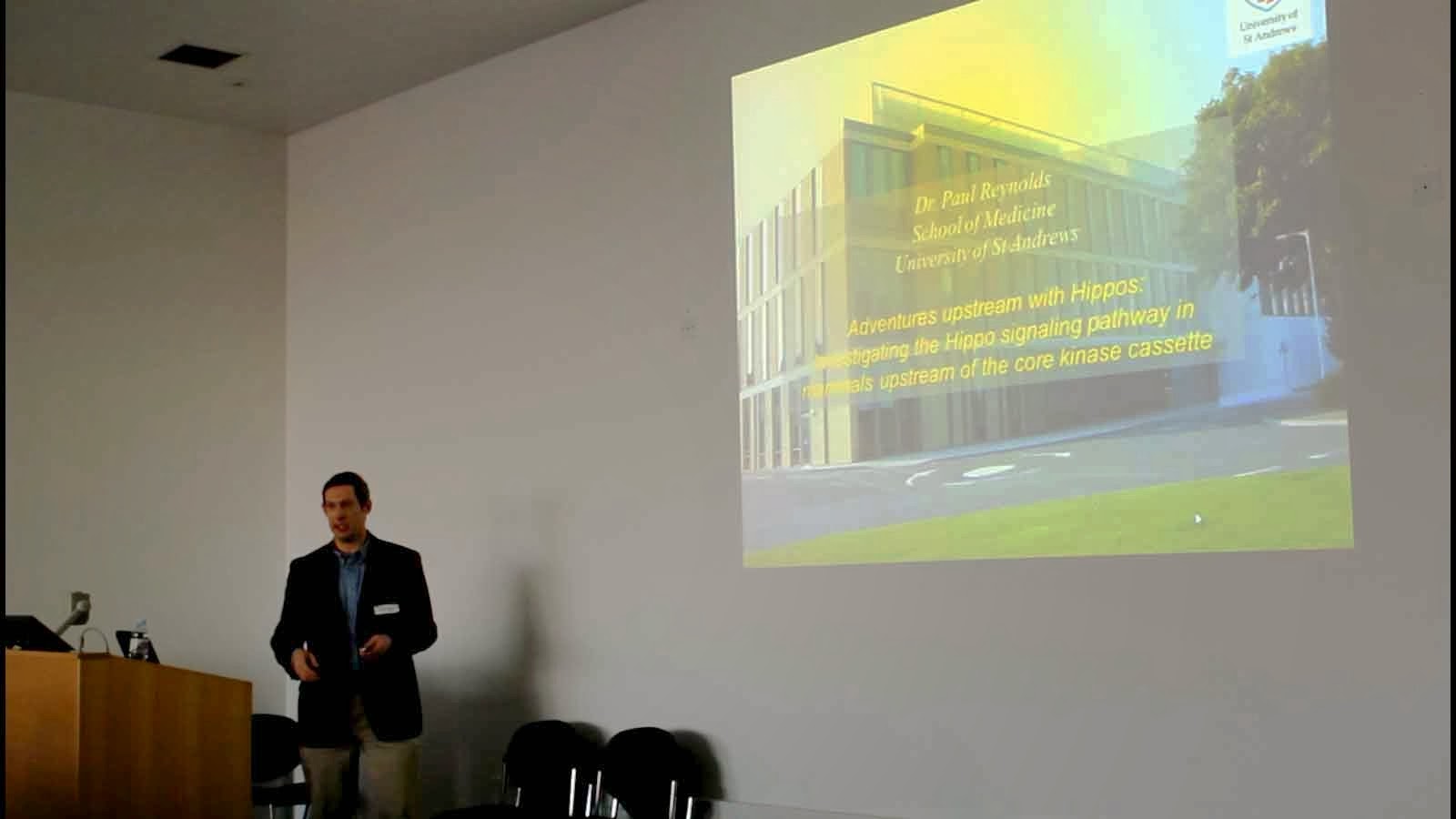Nic Tapon is one of the few scientists who have made major contributions to the discovery of a new signal transduction pathway. As a result of tumour suppressor screens in the fruit fly he and others identified a set of genes/proteins that regulate development, organ growth/size, stem cell function and whose dysregulation is involved in the development of many types of cancer. This regulatory system is now known as the Hippo pathway.
Nic Tapon & fruit fly, the key model of his researchRecent research has connected Hippo members to many other regulatory systems including AMPK and mTOR (a hint to exercise physiologists) and Nic's team has contributed important discoveries. When giving a talk at Aberdeen Nic was willing to answer some questions related to his research.
1) How did you become
involved in the tumour suppressor screens and why did you use the fruit fly as
a model?
My PhD was a cell
culture-based project, but when I wrote the introduction to my thesis, I became
fascinated by the fly and worm genetics literature and the power of screens.
The possibility of doing complex genetic manipulations very rapidly was also part
of the attraction. I was lucky to be offered a postdoc position in Iswar
Hariharan’s lab at a time when genetic mosaicism (the ability to genetically
manipulate small patches of tissue in an otherwise wild type organism) was
revolutionising fly genetics. This created a gold rush of phenotype-based
screens to study all sorts of processes, from tumour suppression to
neurodegeneration. At the same time, the fly genome was being sequenced, which
made mapping the mutations much easier. The discovery of the Hippo pathway was
part of this genetic gold rush. These were exciting times!
2) When and how did you
note that the tumour suppressor genes were not independent genes but constitute
a pathway?
During the course of my
screen, I identified mutations in two genetic loci with similar phenotypes, salvador and dali (long story…). So it was the similarity between the two
phenotypes (more proliferation, less apoptosis) that told us these two genes
might function in a common pathway. dali
turned out to be the previously identified tumour suppressor kinase warts/lats, which had been discovered by
Peter Bryant and Tian Xu. Marius Sudol had identified the WW domain as a small
protein-protein interaction motif, and Salvador has two WW domains, while Warts
has several WW domain-binding motif. Kieran Harvey then showed that Salvador
and Warts can physically interact in
vitro, and we went from two orphan tumour suppressors to a (modest)
pathway!
3) How did people in
the field agree on the term ‘Hippo’?
Georg Halder had called
his mutants hippo because the head of
mutant flies had a puckered appearance reminiscent of hippopotamus skin. This
seemed more fun than Drosophila
Mammalian Sterile 20-like, so the rest of us adopted that name! DJ Pan started
to use the term “Hippo pathway” in his 2003 Cell paper (Wu et al), and the rest is history…
4) Why do you think was
the Hippo pathway was overlooked for so long despite its ubiquitous expression and
importance?
The core kinase
cassette was actually discovered in yeast as the Mitotic Exit Network/Septation
Initiation Network before the Hippo pathway was identified in flies. The
connection with tissue growth was made thanks to advances in genetic mosaicism,
which allowed phenotype-based screens for tumour suppressor genes. So I think
it was technological advances that were needed to kick-start the field.
5) The Tead
transcription factors, which are now seen as the key downstream regulators of
the pathway, were first characterised often in the context of skeletal muscle.
Were you surprised by this (Hippo was mainly studied in epithelial cells) and
how did this affect your thinking about the Hippo pathway?
All major signalling
pathways are used reiteratively in many processes. Although it was initially
identified in the context of growth control, the Hippo pathway is no different.
So no, not surprised.
6) What are your next
(non-confidential) research plans?
That would be telling! Understanding
the wildtype function of the Hippo pathway (see Lawrence and Casal, Dev Biol
2013).






